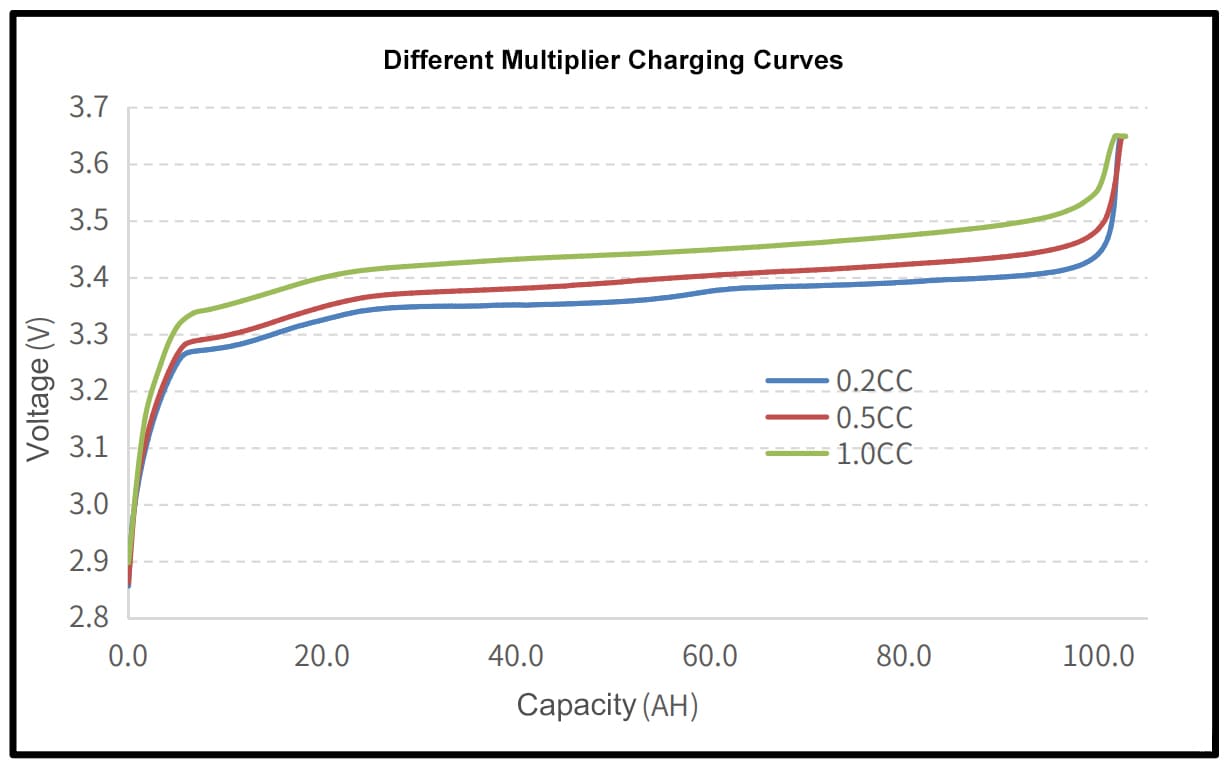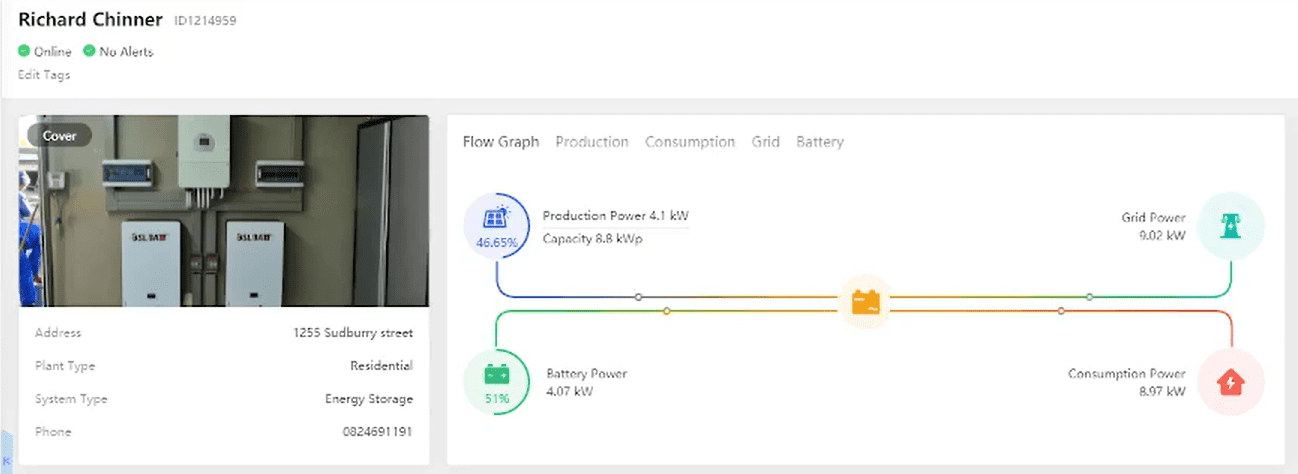Industry Application
Product Type
When is A LiFePO4 Solar Battery Fully Charged?
Why your SOC indicator is full, but your LiFePO4 solar battery does not stop charging is a common problem our customers encounter when using BSLBATT LiFePO4 solar battery.
LiFePO4 batteries, also known as lithium iron phosphate batteries, have specific charging characteristics. During charging, the voltage of a LiFePO4 battery gradually increases until it reaches a predetermined threshold. The nominal voltage of LiFePO4 batteries is usually between 3.2 and 3.3 volts. If you purchase a 48V LiFePO4 solar battery with BSLBATT 16S, the nominal voltage is typically 51.2V.

When charging the LiFePO4 solar battery, the voltage will slowly increase as the energy in the battery is stored. As charging proceeds, the voltage of the battery cell reaches approximately 58.4V, indicating that it is fully charged. At this point, the battery has reached its maximum capacity and is ready for use.
| 1S | 4S | 8S | 16S | |
| 3.2V LiFePO4 Battery | 12V LiFePO4 Battery | 24V LiFePO4 Battery | 48V LiFePO4 Battery | Capacity |
| 3.65V | 14.6V | 29.2V | 58.4V | 100%(Charging) |
| 3.4V | 13.6V | 27.2V | 54.4V | 100%(Suspended) |
| 3.35V | 13.4V | 26.8V | 53.6V | 99% |
| 3.33V | 13.3V | 26.6V | 53.2V | 90% |
| 3.3V | 13.2V | 26.4V | 52.8V | 70% |
| 3.28V | 13.1V | 26.2V | 52.4V | 40% |
| 3.25V | 13.0V | 26.0V | 52.0V | 30% |
| 3.23V | 12.9V | 25.8V | 51.6V | 20% |
| 3.2V | 12.8V | 25.6V | 51.2V | 17% |
| 3.13V | 12.5V | 25.0V | 50.0V | 14% |
| 3.0V | 12.0V | 24.0V | 48.0V | 9% |
| 2.5V | 10.0V | 20.0V | 40.0V | 0% |
However, in order for the LiFePO4 solar battery to have a longer life, the charging of the LiFePO4 battery needs to be more finely managed to ensure optimal performance and safety. Therefore, energy storage inverters or battery BMS systems often supervise and control the charging process. These systems monitor various parameters, including voltage, current and temperature, to regulate the charging and protect the battery from potential problems such as overcharging or over temperature.
Energy storage inverters or battery BMSs use complex algorithms that consider multiple factors to accurately determine the state of charge of a LiFePO4 battery. While voltage is an important factor, these systems may also take into account other variables such as current and temperature to ensure a complete assessment of the battery’s state of charge.
Currently, BSLBATT engineers have two types of charging logic in the BMS for LiFePO4 solar battery charging, one is to determine if the battery SOC is full based on the LiFePO4 battery’s display or indicator, and the other is to determine if charging is complete by the LiFePO4 battery’s charge as of voltage The second is to determine whether the charging is completed by the charging cutoff voltage of LiFePO4 battery.
Based on these two different control logics, if you buy a LiFePO4 solar battery with a target as of voltage, you don’t need to worry about overcharging when the SOC is already showing full, because the BMS or the storage inverter algorithmically determines that you’re as of voltage is not at the final target (for example, our PowerLine For example, our PowerLine battery will aim to reach the charging cut-off voltage of 54.5V), so the battery will send the charging “need to continue charging” command to the storage inverter.

The 48V LiFePO4 solar battery is charged in two stages
First, constant-current charging, that is, a certain current, and lithium iron phosphate battery voltage gradually increases with the charging process, according to the above specification is generally charged with a current of 0.5C (C is the nominal capacity of the battery and wind against a method of expression, 0.5C), when the battery voltage is close to the full voltage of 58.4V, change the constant-current charging to constant-voltage charging. This process is about five hours.
Second, constant voltage charging, that is, the voltage is certain, and the current gradually decreases as the saturation of the cell deepens, according to the specification, when the current decreases to 0.01C that is, 10mA, the charging is terminated. With this process and constant-current charging time added together, the total charging time should not exceed eight hours. Therefore, to determine whether the lithium iron phosphate battery charging has reached saturation has two criteria: one is the current of 0.01C, and the second is the total duration of no more than eight hours, in other words, the lithium battery charging process if eight hours later still can not reach 0.01C, is considered substandard products.
BSLBATT lithium iron phosphate solar battery charging is usually recommended for the CCCV charging method, that is, constant current first and then constant voltage. Constant current recommended 0.5C. Constant voltage recommended 3.65V, that is, constant current process 0.5C current charging, when the battery voltage reaches 3.65V, using 3.65V voltage regular voltage charging, when the charging current is lower than 0.1C (or 0.05C) stop charging, that is, the battery has been fully charged. Also, please note that lithium iron phosphate solar battery is best not to charge below 0 degrees Celsius.
A Guide to Choosing the Best 48V Lithium Golf Cart Battery
Would it be worth investing in a 48V ...
10 Exciting Ways To Use Your 12V Lithium Batteries
Back in 2016 when BSLBATT first began designing what would become the first drop-in replacemen...
BSLBATT Battery Company Receives Bulk Orders from North American Customers
BSLBATT®, a China Forklift battery manufacturer specializing in the material handling indust...
Fun Find Friday: BSLBATT Battery is coming to another great LogiMAT 2022
MEET US! VETTER’S EXHIBITION YEAR 2022! LogiMAT in Stuttgart: SMART – SUSTAINABLE – SAF...
Looking for new Distributors and Dealers for BSL Lithium Batteries
BSLBATT battery is a fast-paced, high-growth (200% YoY ) hi-tech company that is leading the a...
BSLBATT to Participate at MODEX 2022 on March 28-31 in Atlanta, GA
BSLBATT is one of the largest developers, manufacturers, and integrators of lithium-ion batter...
What makes the BSLBATT the Superior Lithium Battery for your Motive Power needs?
Electric forklift and Floor Cleaning Machines owners who seek the ultimate performance will fi...





























